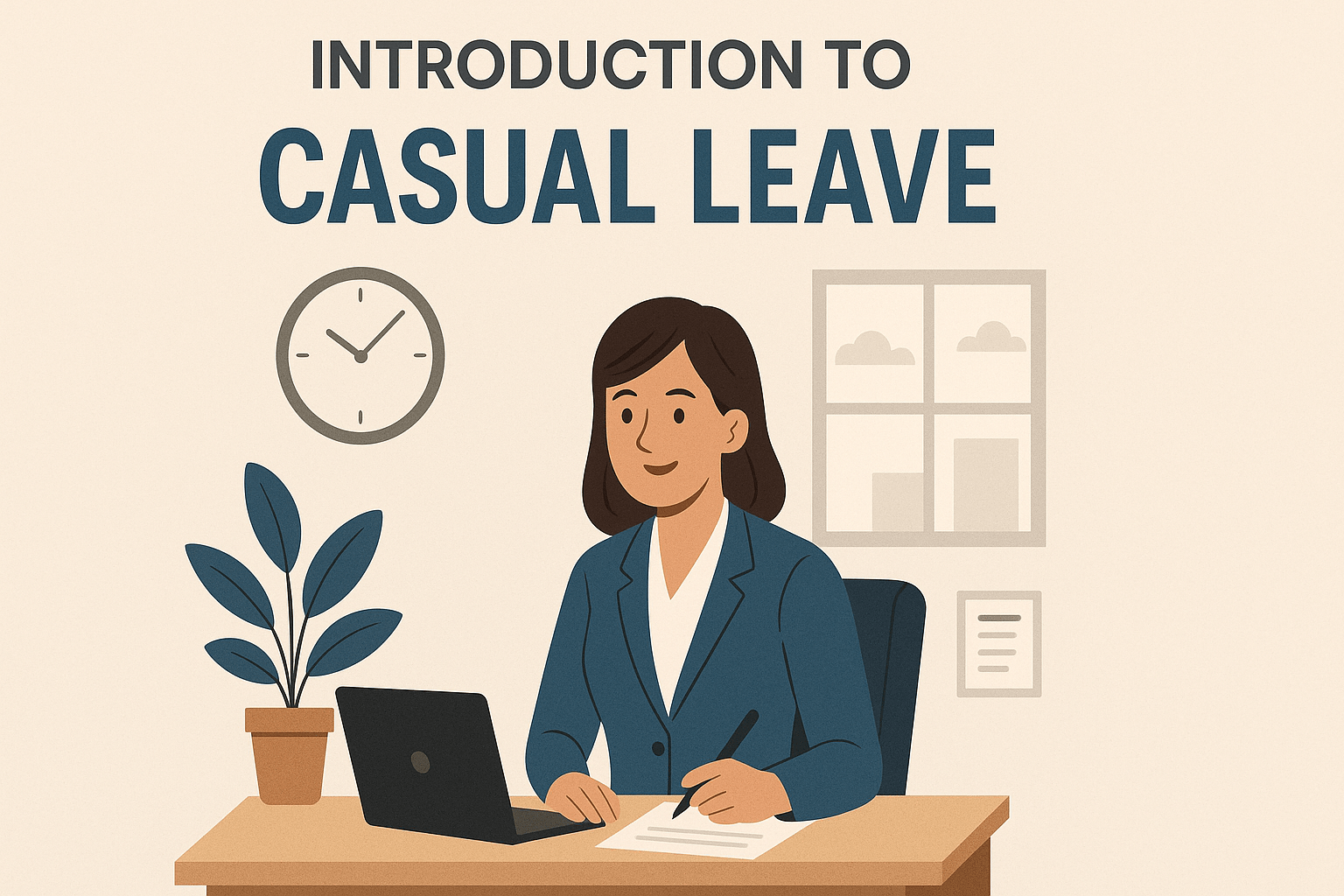While absenteeism and presenteeism are established problems within the workplace, there’s another issue that companies need to be aware of: leaveism. What’s more, leaveism is especially insidious because it can go undetected until its damage is already done. Research has found that 63% of UK leaders reported encountering leaveism in their businesses, highlighting its widespread nature.
This post explores the idea of leaveism, its forms, causes, and what you can do about it.
Leaveism is a term first coined by Dr. Ian Hesketh, from the University of Manchester, in 2013 to describe the tendencies of employees who use their annual leave allowance to work outside of their contracted hours. A significant number of employees in the UK work outside their contracted hours, illustrating the prevalence of leaveism. For example, a study published in Occupational Medicine found that many employees engage in leaveism, which can have serious implications for their health and organizational productivity.
It comes in a variety of forms, such as:
Employees taking work home with them, including checking and responding to calls and emails
Employees taking annual leave, or another type of leave for sick leave, such as TOIL or duvet days, instead of calling in sick
Employees using their holiday allowance to catch up on work – or to do extra work
Introduction to Leaveism
Leaveism is a term coined by Dr. Ian Hesketh in 2013 to describe the phenomenon of employees using their annual leave or flexi-hours to catch up on their workload, rather than taking time off to rest and recharge. This can include working from home, taking work on holiday, or using allocated time off to complete tasks that cannot be finished within normal working hours. Research has shown that leaveism is a common practice among employees, with a recent study finding that 63% of UK leaders reported that leaveism had occurred in their organization. The Chartered Management Institute found that employees working very long hours, including those in the public sector, are more likely to experience leaveism. This trend highlights the need for organizations to address the root causes of leaveism and promote a healthier work-life balance.
What causes leaveism during normal working hours?
Just as leaveism has a variety of guises, it also has a variety of causes
High workloads: Employees have so much work assigned to them that they find it difficult, or impossible, to complete it within their contracted hours.
Distractions: Employees find the office environment too distracting (co-workers constantly approaching them, socialising, etc) and feel the need to catch up out of hours. Research indicates that the average worker experiences approximately 56 interruptions per day, contributing to the need to catch up on work outside of regular hours. Additionally, technology contributes to workplace distractions and the ‘always-on’ culture. Some employees find they can concentrate better when working from home due to fewer distractions.
Presenteeism: Employees come into work when they’re feeling unwell so they’re less productive. As a result, they feel compelled to take work home to catch up. Pressure from colleagues can also lead to leaveism, as employees may feel the need to meet expectations and work longer hours.
Insecurity about job position: Employees don’t feel safe in their job position, perhaps due to being new to the company, being a young employee, or (in the case of jobs with targets) a lack of performance. Fear of job insecurity can drive employees to engage in leaveism.
Workaholism: Quite simply, some employees love to work and are particularly career-driven, so they’re happy to take their work home to them.
What are the effects of leaveism on workplace health?
Burnout: If your employees aren’t resting or engaging in recreation on their days off, then they’re bound to burn out. This could be physical burnout, resulting in susceptibility to falling ill, or it could be mental, resulting in less enthusiasm for work and difficulty in concentrating. High levels of emotional intelligence in managers are crucial to address leaveism effectively. The majority of UK managers have experienced leaveism in their workplaces, highlighting the severity of this issue. Promoting employee well-being is essential to reduce leaveism and its negative impacts.
Higher staff turnover: If instances of leaveism within your company are caused by excessive workloads, then employees are likely to depart when they come across a similar position that appears to offer a lighter workload – or more money for the same amount of work. Leaveism can harm the overall health of a business by increasing absenteeism and turnover rates.
A failure to realise how understaffed you are: If your staff are regularly taking on a workload that should be undertaken by more than one person, then you won’t have an accurate representation of how many members of staff you really need. Employees often use their annual leave to mask the fact they are unwell, which can further obscure the true staffing needs.
Effects on the Organization
Leaveism can have a significant impact on an organization’s productivity, workplace health, and employee wellbeing. When employees are working long hours, including outside of their contracted hours, they are more likely to experience stress, low morale, and burnout. This can lead to a decrease in productivity, an increase in sickness absence, and a negative impact on the overall health and wellbeing of the workforce. Furthermore, leaveism can mask the true extent of sickness absence, making it difficult for employers to identify and address underlying health issues. The CIPD found that UK managers spent an average of 29 days per year working outside of normal working hours, which can contribute to the culture of leaveism. This underscores the importance of addressing leaveism to maintain a healthy and productive workforce.
How can you deal with leaveism?
Communicate with your staff
First and foremost, talk to an employee who’s engaging in leaveism and try to discover why it’s taking place. Is their workload too high? Do they feel insecure about their position in the company? Or are they a workaholic? Understanding the root cause makes it easier to find the most effective solution. Then, once you’ve got to the bottom of their leaveism, encourage, or implore, them to actually switch off when they’re off work. Good leadership is key to helping employees feel fulfilled at work, which can also reduce instances of leaveism. Managers with high emotional intelligence often cultivate higher levels of commitment from their teams, further enhancing workplace dynamics and reducing leaveism.
Assess your flexible working options
If an employee frequently takes home with them because they’re distracted in the office, you could offer them the chance to work remotely or similar flexible working options. If you don’t currently offer many, or any, flexible working options, like the ability to start and finish work earlier, then this would be a good time to start. Flexible working can help employees manage their work and home life more effectively, reducing the need for leaveism. Employees report higher satisfaction when they have the flexibility to work outside traditional office hours, making flexible working a valuable tool for improving workplace morale.
Assess workloads
If you find that staff are consistently working outside their contracted hours because they have too much on their plate, you need to sit down with them and assess their workloads. You can then help them prioritise, redistribute their workload among existing employees, or even hire additional staff if necessary. Not only will this solve leaveism issues with specific employees but it will contribute to a company culture where staff aren’t afraid to express the fact that they have too much work.
ScheduleLeave is absence management software that allows you to easily track your employees’ annual leave and sickness absence, better enabling you to identify potential leaveism issues. If you’re interested in how much time ScheduleLeave can save your company, sign up for a free trial. Investing in mental health support can yield a return of £5 for every £1 spent, making it a worthwhile consideration for improving workplace wellbeing. Employers should create a culture that supports mental health for effective workplace wellbeing, as this can help reduce leaveism and improve overall employee satisfaction.
Best Practices for Employers
Employers can take several steps to address leaveism and promote a healthy work-life balance for their employees. This includes offering flexible working arrangements, such as flexi-hours or remote working, to help employees manage their workload and reduce the need for leaveism. Employers can also provide training and support for managers to help them identify and address leaveism, and to promote a culture of wellbeing and resilience. Additionally, employers can conduct regular check-ins with employees to monitor their workload and provide support where needed. The Chartered Management Institute found that employers who prioritize employee wellbeing are more likely to see an improvement in productivity and a reduction in sickness absence. By implementing these best practices, employers can create a more supportive and effective work environment.
Conclusion and Recommendations
In conclusion, leaveism is a significant issue that affects many employees and organizations. It can have a negative impact on productivity, workplace health, and employee wellbeing. Employers can take several steps to address leaveism, including offering flexible working arrangements, providing training and support for managers, and conducting regular check-ins with employees. By prioritizing employee wellbeing and taking a proactive approach to addressing leaveism, employers can create a healthier and more productive work environment. Recommendations for employers include monitoring workload and providing support where needed, promoting a culture of wellbeing and resilience, and providing training and resources for employees to manage their workload and reduce the need for leaveism. By taking these steps, organizations can foster a more balanced and sustainable work culture.




